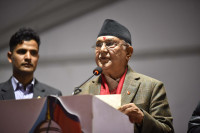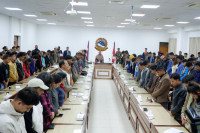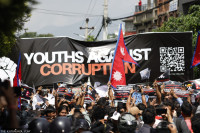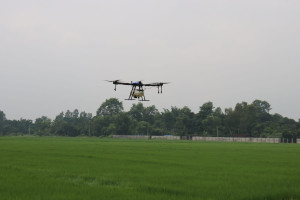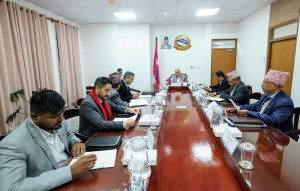Opinion
Next on the agenda
Now that the constitution has been proclaimed, we should turn towards the economy
Steering Nepal towards economic prosperity has once again taken centre stage in public discourse after the promulgation of the new constitution which ended a decade-long protracted political transition. A legacy of various factors, including resource misallocation, corruption, inadequate infrastructure, poor governance and domestic conflict have hampered Nepal’s economic performance and disabled attempts to deal with last year’s natural disasters and the subsequent border blockade. The loss from these two shocks has been estimated at a whopping $10 billion, or approximately half of the gross national product (GNP). In reality, the economy has never been a priority for the political actors since the onset of the civil war in 2006 until this day. As a result, Nepal remains mired in poverty and lags behind its neighbours, which include some of the fastest growing Asian economies.
Immediate attention must be paid to reconstruction to resuscitate the economy which was knocked out by the shocks. However, the entire spectrum of political actors need to understand how their collective lethargy, myopic vision and brinkmanship politics has exacerbated the economic hardships of ordinary citizens. The scourge of corruption has also lowered productivity and distorted efficiency, further denting growth prospects. Nepal has been ranked 130th among 168 countries in Transparency International’s Corruption Perception Index, which has sent negative signals to donors and investors when the country is desperately seeking resources (both aid and investment) to bolster growth.
Facing the reality
Despite achieving vital political milestones, the country has consistently missed its economic growth targets for the past quarter century. Living standards have improved, albeit slowly. The GNP per capita grew by a mere 4.4 percent on average from $200 in 1990 to $730 in 2014, by $21 per annum. However, this growth was not accompanied by a substantial reduction in poverty or inequality. According to the World Bank’s 2010 World Development Indicators, 23.7 percent of the population lives on less than $1.25 a day while 56 percent lives on less than $2 a day. The richest 20 percent of the population owns 42 percent of the national income compared to the poorest 10 percent which owns just 3.6 percent. The earthquake came as another blow, derailing progress in meeting targets under the Millennium Development Goals due to destruction of rural infrastructure, loss of human capital and displacement. It could take Nepal up to 2032 to attain a per capita income of $1,100 and graduate from its least developed country (LDC) status if growth continues at 4-5 percent. Hence, all efforts must be put into fully utilising resources and raising productivity.
Having achieved democratic gains in terms of greater empowerment and wider representation for various sections and strata of society, the economic agenda needs to flow concomitantly along with global economic currents. Doing so will enable Nepal to pick up the growth momentum it experienced in the first half of the 1990s besides fully integrating into the global economy as a member of the World Trade Organisation and benefitting from regional and bilateral free trade agreements where it has been granted preferences as an LDC.
However, the national economic agenda has been directionless and without leadership and vision. This confusion is amply displayed in the new constitution, which identifies ‘socialism’ as the avowed goal, raising a question whether the state control over the economy is the panacea for Nepal’s development challenges. More recently, the delayed formation of the National Reconstruction Authority, unjustified division of ministries despite announcements of fiscal austerity measures, low rate of government expenditure, a thriving black economy and rent-seeking amid the border blockade provides little assurance about the state’s capacity to deliver immediate relief and pull the country out of the economic mess. Chalking out a broad-based national economic vision is even more far-fetched.
At a crossroads
Sustained growth that will not only rapidly lift a majority of Nepal’s largely rural population out of poverty but will also assure high income growth and employment that can no longer come from a traditional agricultural sector which is dependent on raw materials and is marked by the absence of input markets such as fertilisers and specialisation in low value-added activities. The tourism sector is also vulnerable to unanticipated shocks that can destabilise urban employment and rural livelihoods that depend on it. Against this scenario, can Nepal continue to depend on migration-generated remittances that has acted as a safety valve for unemployment and kept its economy afloat as it has done for the past quarter century?
Mass domestic job creation and economic resilience can occur only when a vibrant domestic industrial sector spurs income and productivity, thus stabilising growth. Narrowing the infrastructure deficit (especially in electricity), streamlining bureaucratic processes and making labour laws flexible (while ensuring worker rights) are indispensible if the country aspires to mobilise both domestic and foreign investment. Nepal’s poor record in attracting foreign direct investment—which is less than one percent of the national income despite possessing a comparative advantage on account of low wages—suggests that current policies and laws have not yielded any tangible results and hence need to be revised.
Empirical evidence of the growth experiences of China, India, successful East Asian and sub-Saharan countries shows that a sound investment climate leads to a manufacturing boom, raising productivity and incomes and rapidly reducing poverty. Manufacturing-led industrial growth, coupled with upgrading to higher value-added activities in agriculture, industry and services, will diversify the Nepali economy while reducing its dependency on a few products and trading partners. The political leadership must now resolve to maintain a fragile peace and address the root causes of conflict by speedily improving delivery of basic services, restoring business confidence and laying the foundations for robust, sustained and equitable growth. The crossroads that Nepal finds itself in today provides an opportunity that will determine the destiny of its 28 million people who have been waiting in anticipation for a long, long time.
Shrestha is an economist specialising in industrial policy




 8.12°C Kathmandu
8.12°C Kathmandu